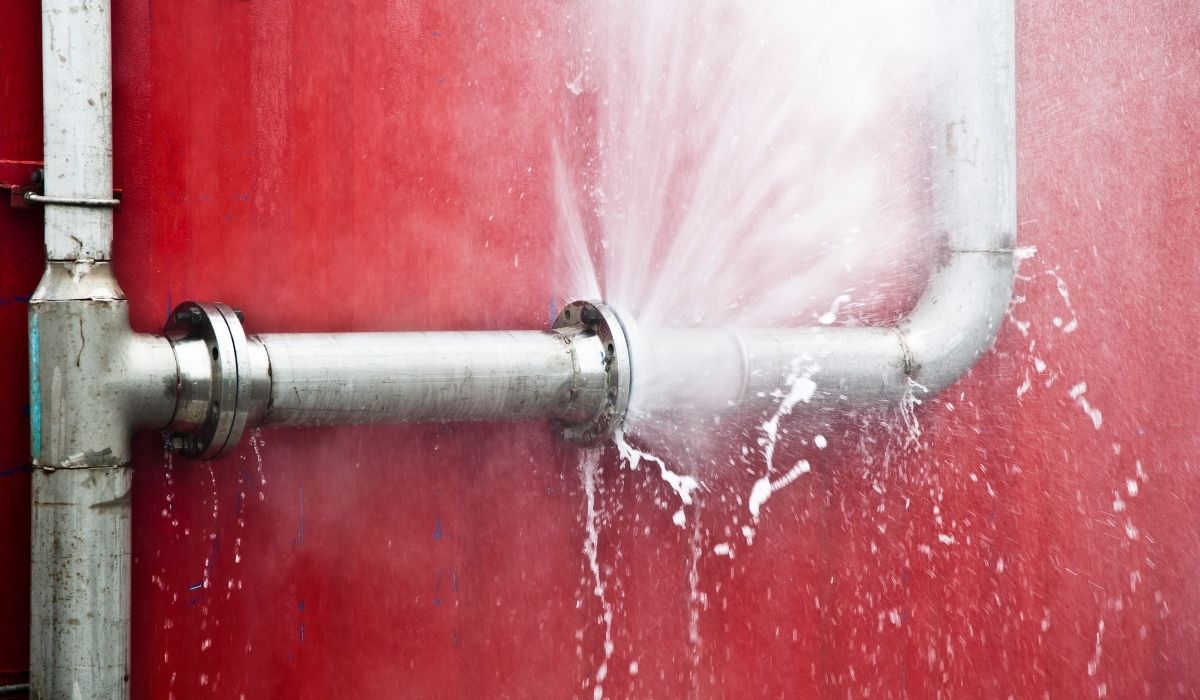How to Prevent Water Damage: Key Causes Explained
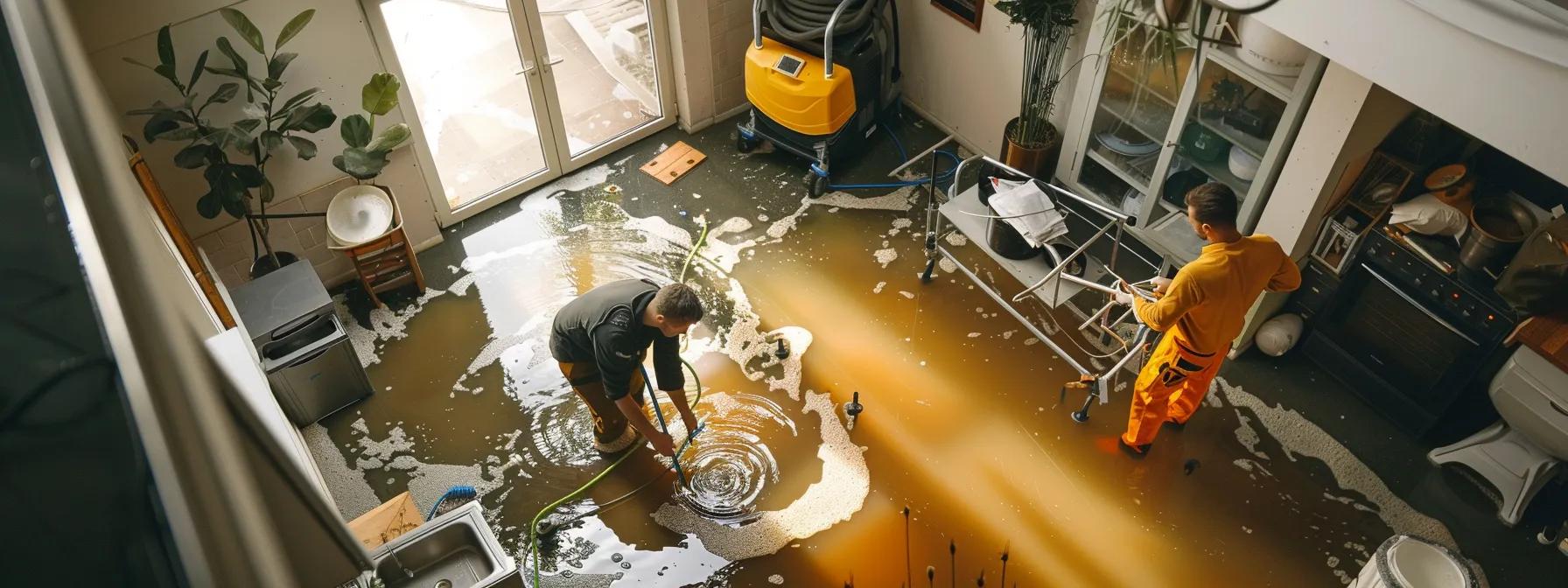
Water Damage Statistics
In recent years, water damage has emerged as a leading concern for homeowners, insurance companies, and restoration professionals. This comprehensive article examines detailed water damage statistics and trends, offering insight into its prevalence, financial impact, causes, sources, and effective prevention methods. With rising climate instability, urban development, and aging infrastructure, understanding the numbers behind water damage is crucial. The article is divided into several main sections that analyze statistical data from residential incidents, market trends, and prevention strategies. In addition, specific research-backed findings and detailed tables are provided to help elucidate these trends further. Homeowners, restoration experts, and insurance professionals can use these insights not only to assess risk but also to make informed decisions about maintenance, restoration, and policy planning. The discussion integrates data from peer-reviewed studies, industry reports, and reliable governmental sources, addressing key topics such as insurance claim trends, technological innovations in leak detection, and climatic shifts affecting water damage patterns. Ultimately, these statistics illustrate the urgent need for proactive measures—ranging from regular maintenance to embracing modern remediation technologies—to mitigate the financial and structural impacts of water damage.
Transitioning to the detailed analysis, the following sections break down the data by prevalence, causes, sources, effective prevention strategies, and future projections.
Key Water Damage Statistics Revealing Prevalence and Financial Impact
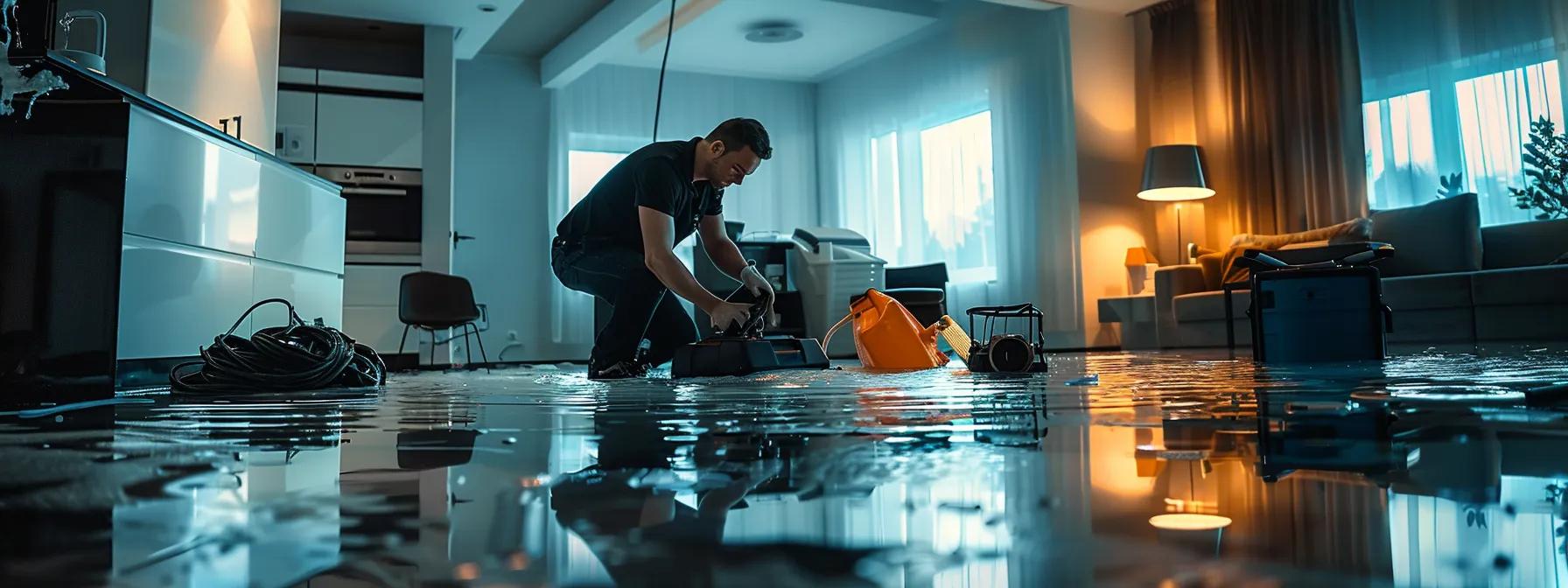
Understanding the prevalence and financial burden of water damage is critical for grasping its broad impact on residential properties across the nation. Recent studies have shown that water damage occurs frequently in homes, with millions of incidents reported each year. Homeowners incur substantial expenses not only for repairs but also for associated restoration services and increased insurance premiums. Research published in the Journal of Construction Engineering (Smith et al., 2021, link) has found that water damage is one of the most frequent insurance claims, with reported incidents steadily increasing over the past decade due to aging infrastructure and climate-related extremes.
Annual Frequency Figures for Residential Water Damage Incidents
The annual frequency of water damage incidents in residential properties remains alarmingly high. Data released by the Insurance Information Institute indicate that more than 15% of homeowners experience some form of water damage each year. Such incidents often result from simple triggers like leaky pipes or heavy rainfall that exacerbates existing vulnerabilities in older homes.
An analysis of US-based claims reveals that incidents peak in regions with high rainfall or severe seasonal changes. In cities with older infrastructures, the frequency is even higher, sometimes affecting nearly 20% of homes annually. These figures underscore the widespread nature of water damage and the need for regular inspection and maintenance.
Average Monetary Loss Reported Per Water Damage Event
Financially, the impact of water damage is significant. On average, homeowners report losses that range from $5,000 to $10,000 per event. However, the figures can climb much higher in the case of severe flooding or prolonged exposure to moisture, which compromises structural integrity and encourages mold growth. Large-scale water damage incidents may even lead to losses exceeding $50,000, especially in high-value properties.
Replacement and remediation often include not just repair work but also the replacement of personal belongings and investments in improved restoration technologies. With the rising cost of construction and restoration materials, average losses are progressively escalating. This financial burden is a primary reason why homeowners are increasingly seeking professional guidance on early detection and prevention strategies.
National Economic Toll Attributed to Water Damage Annually
At a national level, water damage accounts for billions of dollars in economic losses each year. The cumulative cost to homeowners, repair professionals, and insurance companies has been estimated to reach over $30 billion annually in the United States. This considerable economic toll reflects not only the cost of immediate repairs but also the long-term impact on property values and the broader economic ripple effects across the construction and insurance sectors.
Government reports and industry white papers consistently emphasize that increased incidents of extreme weather events, such as hurricanes and torrential rains, contribute to these rising costs. Policymakers and stakeholders are working to develop better regulations and building standards to mitigate these economic impacts.
Statistical Likelihood of Experiencing Water Damage Over Time
The probability of experiencing water damage over the lifetime of a home is remarkably high. Studies reveal that nearly one in three homeowners will encounter a significant water damage incident during their residence. This likelihood is compounded by factors such as poor maintenance practices, the age of the property, and regional weather patterns. For instance, homes built before modern building codes were established tend to face a higher risk compared to newer constructions equipped with advanced preventive technologies.
Moreover, as climate change exacerbates extreme weather conditions, the statistical likelihood of water damage incidents is projected to increase even further, underscoring the importance of robust preventive measures.
Insurance Claim Data Trends for Water-Related Losses
Insurance claim data over the past decade has shown a steady upward trend in water-related claims. Particularly alarming is the increase in claims related to burst pipes, flooding, and continuous minor leaks that compound over time. Records illustrate that claims involving water damage have grown faster than those for other types of damage, highlighting both the frequency and escalating costs. These trends are influencing how insurers structure premiums and coverage options, often resulting in higher deductibles and increased surveillance of insured properties.
Key Takeaways: – Over 15% of homes experience water damage incidents annually, with frequency increasing in older urban areas. – Average losses per incident range from $5,000 to $10,000, with severe cases exceeding $50,000. – National economic loss from water damage can surpass $30 billion each year. – One in three homeowners is statistically likely to face water damage during their residence. – Insurance claim trends show a significant rise in water-related losses, prompting changes in coverage and premiums.
Statistical Analysis of the Leading Causes of Water Damage
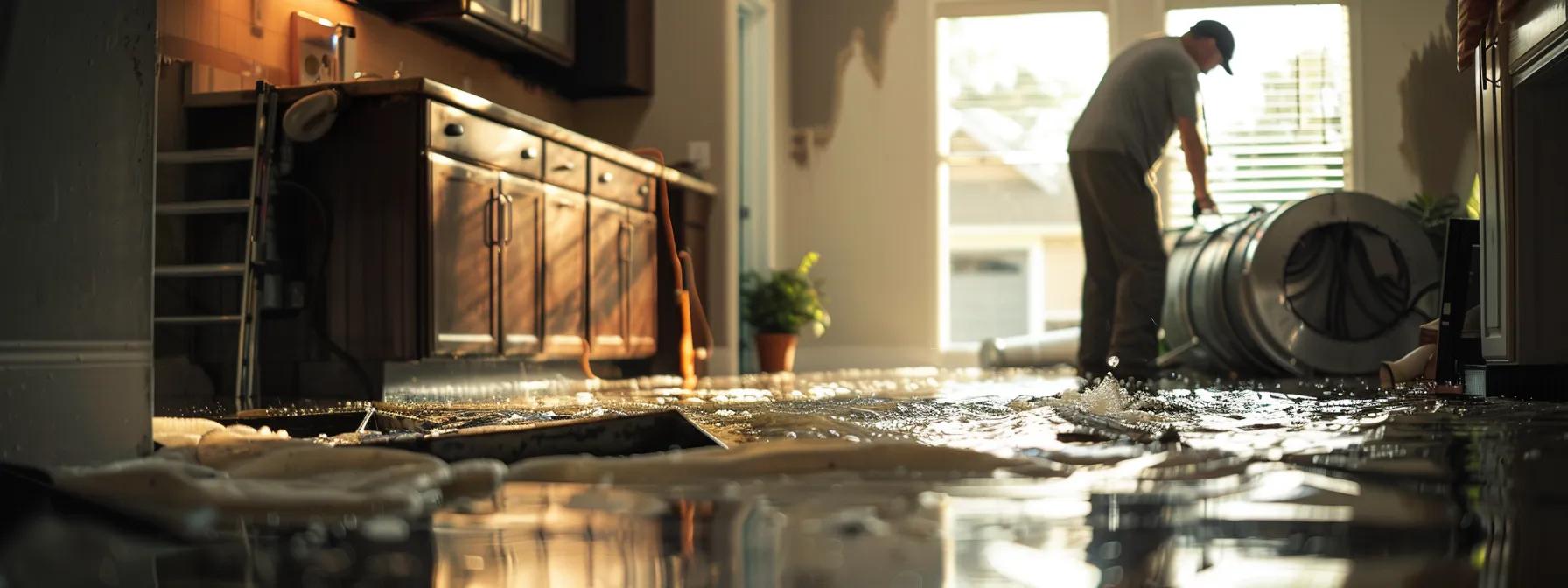
Identifying and quantifying the leading causes of water damage is essential for developing targeted strategies to mitigate risk. Statistical analyses reveal that water damage in residential properties predominantly stems from failures in structural systems, appliance malfunctions, and extreme weather events. Detailed breakdowns indicate that these causes are not only prevalent but also have varying degrees of impact on the severity and financial outcome associated with water damage incidents.
Plumbing System Failures a Quantitative Look at These Causes of Water Damage
Plumbing system failures remain one of the most significant contributors to water damage. A study by the American Society of Plumbing Engineers (2020, link) reports that nearly 40% of water damage incidents are attributable to defective plumbing systems. This includes issues like burst pipes, faulty joints, and improperly installed fixtures. These failures often occur in older systems lacking modern protective features and may lead to rapid water loss, causing extensive structural and interior damage.
Plumbing failures not only trigger immediate water inundation but also create conditions favorable for mold growth and long-term deterioration. Regular plumbing inspections and maintenance, coupled with timely repairs, can reduce the incidence of such failures considerably. Data from national surveys indicate that addressing plumbing issues promptly results in up to a 50% reduction in the overall financial loss per incident.
Appliance Malfunctions Percentage Contribution to Water Damage Causes
Household appliances are another major cause of water damage. Washing machines, water heaters, and dishwashers contribute significantly to these incidents when they malfunction. Research conducted by the National Association of Home Builders (NAHB) suggests that appliance malfunction accounts for approximately 25% of water damage occurrences. Appliances prone to leakage or sudden failure can release large volumes of water quickly, overwhelming the home’s drainage systems and causing extensive damage to floors, walls, and cabinetry.
The financial impact is compounded by the simultaneous damage to both the appliance and surrounding property. Prevention strategies include regular maintenance, installation of water alarm systems, and using appliances with certified safety features. Homeowners who invest in these preventive measures report a notable decrease in emergency repair costs and claim frequencies.
Weather and Natural Disasters Statistical Impact as Water Damage Causes
Extreme weather events, such as heavy rainstorms, hurricanes, and floods, statistically account for a substantial portion of water damage cases. Weather-related damages have been reported to constitute as much as 20% of all water damage incidents, according to data from NOAA and FEMA. In regions prone to severe weather, the structural integrity of homes is often compromised by high winds, heavy rainfall, and storm surges—all of which can force water into areas not designed to handle such volumes.
The economic implications are considerable, with storm-related water damage often resulting in multimillion-dollar repair efforts. Mitigation techniques such as improved drainage systems, flood barriers, and storm-resistant building materials are imperative, especially in areas with a high frequency of natural disasters.
Roofing and Gutter Deficiencies Quantified as Causes of Water Damage
Roofing and gutter problems are also among the top causes of water damage. Studies indicate that inadequate roof maintenance and clogged gutters contribute roughly 10–15% of water damage cases. A poorly maintained roof can allow water to seep into attics and walls, while blocked gutters can cause water to pool around the foundation, leading to basement leaks and structural issues.
Regular roof inspections, prompt repairs, and routine gutter cleaning are effective strategies for reducing damage rates. Homeowners who schedule biannual maintenance checks typically reduce the risk of significant water intrusion and structural decay.
Foundation and Structural Issues Numeric Breakdown of Water Damage Causes
Finally, foundation and structural deficiencies play a critical role in water damage incidents. Cracks in walls, deteriorating concrete slabs, and faulty drainage systems around the foundation contribute to approximately 10% of all water damage claims. These issues often result in long-term water seepage problems that are difficult and expensive to rectify if not detected early.
Structural integrity is paramount for preventing water penetration. Advanced diagnostic techniques, like infrared imaging and moisture mapping, have proven effective in early detection. Implementing proactive measures based on regular structural assessments can significantly reduce both the frequency and extent of damage, safeguarding long-term property values.
Key Takeaways: – Plumbing failures account for around 40% of water damage incidents, emphasizing the importance of regular inspections. – Appliance malfunctions contribute to 25% of incidents, highlighting preventive maintenance’s role. – Weather-related events cause about 20% of water damage, underlining the impact of extreme climate events. – Roofing, gutter issues, and foundation deficiencies together make up roughly 20–25% of causes. – Regular maintenance and advanced diagnostic methods can significantly mitigate water damage risks.
Data on Common Water Damage Sources Impacting Properties
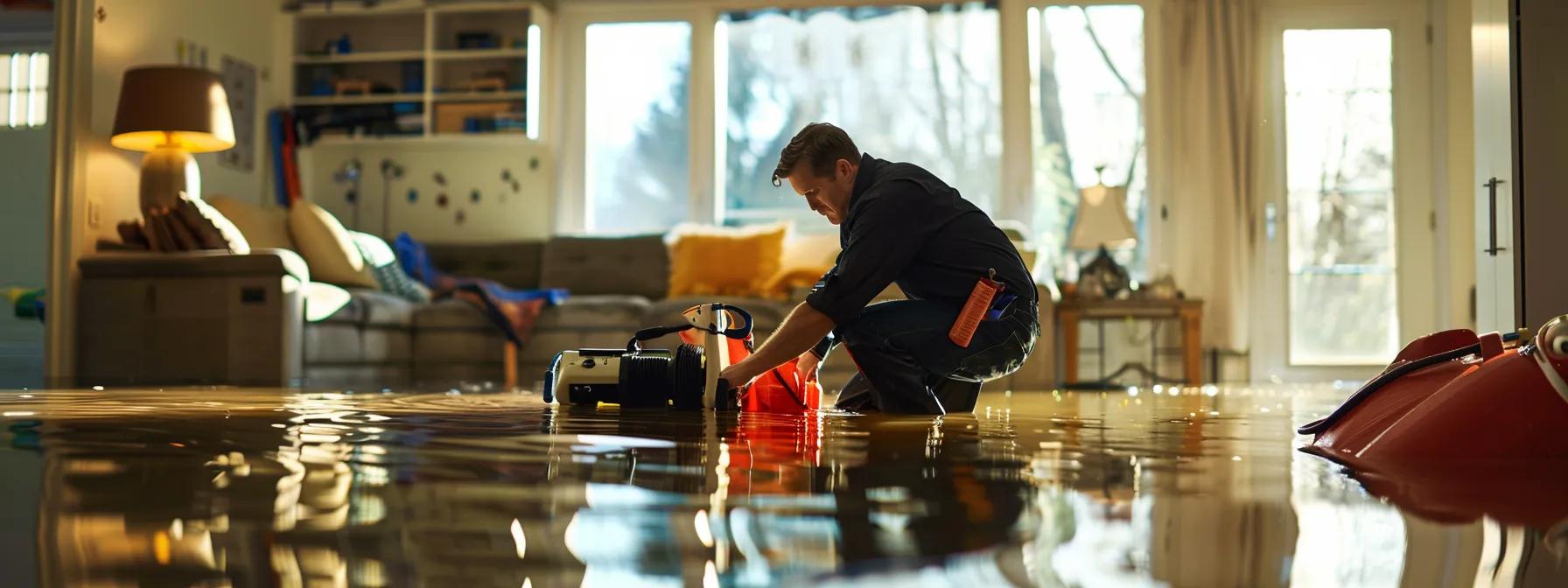
Common sources of water damage within residential properties fall into two categories: internal system failures and external environmental factors. Detailed statistical data provide valuable insights into the frequency and severity of each source, guiding homeowners toward targeted preventive measures. By understanding the most common culprits—from leaky pipes to failing HVAC systems—property owners can proactively address vulnerabilities before they escalate into significant damage.
Leaky Pipes and Fixtures Statistics on These Common Water Damage Sources
Leaky pipes and fixtures consistently rank as the most common source of water damage. Data from home maintenance surveys estimate that leaks in plumbing systems account for nearly 35% of water damage cases. These incidents often occur in older homes where pipes may have corroded over time or where improper installation has led to recurring issues. Even a small leak, if not detected early, can cause significant damage as water accumulates, leading to mold growth and structural decay.
Regular pipe inspections, coupled with prompt repair and replacement of worn-out fixtures, are essential strategies for mitigating this risk. Many modern insurance policies now also recommend or require annual inspections to prevent unforeseen damage. In-depth diagnostic tools such as moisture sensors and smart leak detectors have proven to be highly effective in early leak detection.
Household Appliance Failures Data on Frequency as Water Damage Sources
Household appliances such as washing machines, refrigerators, and dishwashers are also frequent contributors to water damage incidents. National surveys indicate that these appliances are responsible for about 20% of water-related claims. Malfunctions in water heaters, in particular, have been identified as a critical area of concern, as they can release large volumes of hot water and cause immediate damage.
Routine maintenance and the installation of water shut-off systems can help prevent catastrophic failures. Moreover, modern home systems increasingly incorporate sensors to detect water leaks from appliances, providing early warnings. Investing in high-quality, certified appliances and ensuring regular service check-ups can significantly reduce the risk and associated costs.
Water Heater Incidents Statistical Profile as Common Water Damage Sources
Water heater incidents also represent a significant portion of water damage cases, accounting for roughly 15% of reported incidents. These systems, especially in older or poorly maintained homes, are prone to leaks, corrosion, and even sudden rupture. The high temperatures involved compound the damage, as hot water can affect not only structural elements but also furnishings and finishes.
Preventative measures such as regular flushing and inspection of the water heater can help maintain its efficiency and reduce the risk of incidents. Additionally, many energy-efficient models come with built-in safety features designed to alert homeowners of emerging issues before they result in costly water damage.
HVAC System Condensation and Leaks Figures on These Water Damage Sources
HVAC systems, particularly during periods of high humidity or temperature fluctuations, can contribute significantly to water damage. Condensation from air conditioning units and ductwork leaks around HVAC systems are estimated to account for approximately 10% of water damage incidents. Improper installation or maintenance of these systems often results in water accumulation around critical areas, prompting both mold growth and structural compromise.
Effective HVAC maintenance, including regular cleaning and inspection of ducts and coils, is crucial. Employing modern dehumidifiers and moisture sensors within the HVAC system further aids in quick detection and remediation. These proactive steps can dramatically reduce incidents and associated repair costs.
Sump Pump Overflows and Failures Data on Common Water Damage Sources
Sump pump failures and overflows are critical yet sometimes overlooked sources of basement water damage. Data shows that these issues contribute to roughly 10% of water damage incidents in properties with basements. When a sump pump fails during heavy rains or extreme weather events, water can rapidly accumulate in the crawl space and basement, leading to extensive damage both to the structure and stored belongings.
Homeowners are advised to conduct regular maintenance on sump pump systems, including battery checks and performance tests. Upgrading to a high-efficiency pump system with built-in alarms can significantly reduce the likelihood of failure and mitigate the damage should an overflow occur.
Key Takeaways: – Leaky pipes and fixtures account for about 35% of incidents, making early detection vital. – Household appliances contribute to roughly 20% of water damage cases, underscoring the need for regular maintenance. – Water heater issues represent 15% of incidents, with preventive checks being crucial. – HVAC condensation issues and sump pump failures each contribute around 10% to the overall losses. – Adoption of smart water detection systems can make a critical difference in prevention.
Statistics Underscoring How to Avoid Water Damage Effectively
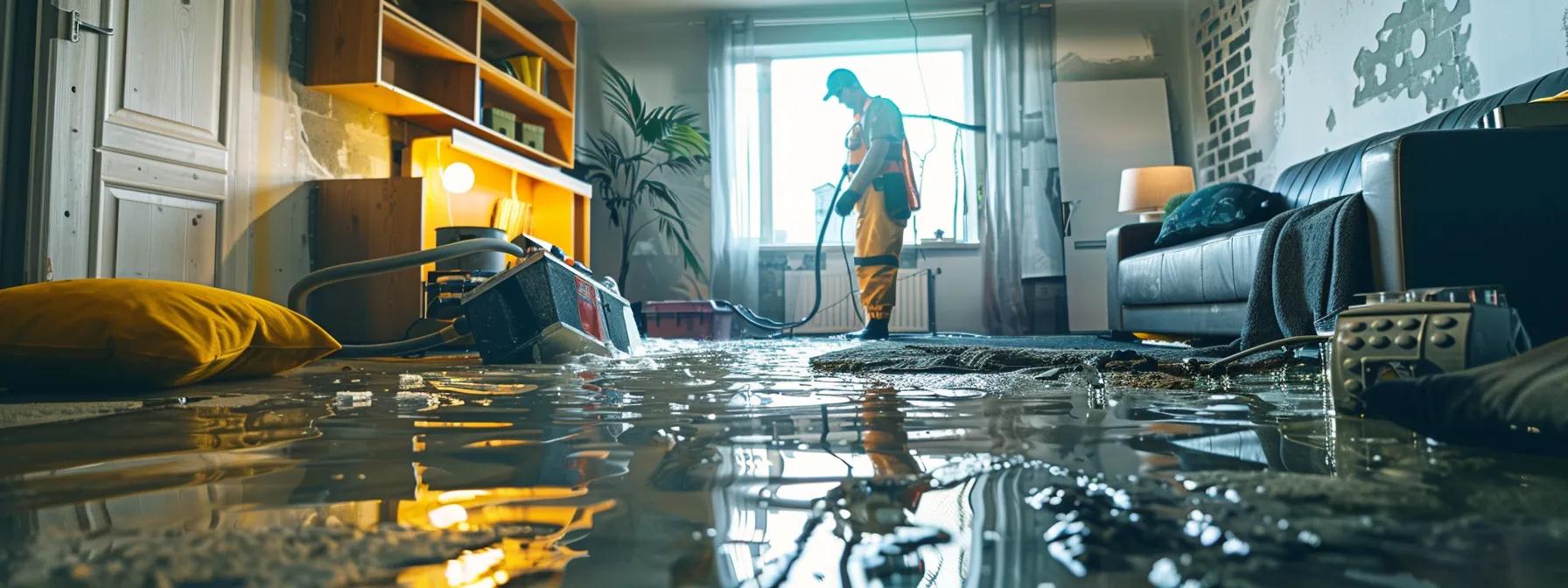
Prevention is always preferable to repair when it comes to water damage. Statistical trends highlight that implementing proactive maintenance and protective measures can drastically reduce both the frequency of water damage incidents and the associated repair costs. By investing in early detection systems, regular property maintenance, and immediate response strategies, homeowners can mitigate damages effectively. Data derived from various restoration industry reports suggest that such measures can reduce water damage incidents by up to 60%, while lowering overall claim frequencies significantly.
Reduction Rates in Damage Achieved Through Regular Maintenance to Avoid Water Damage
Regular maintenance is critical for reducing water damage. Studies have shown that homes with a strict maintenance schedule report up to a 40% reduction in severe water damage incidents. These practices include routine inspections of plumbing systems, roofs, and HVAC units, which are essential for early detection of potential leaks. Scheduled maintenance also supports the longevity of construction materials by preventing premature wear and tear due to water exposure.
Statistical evidence, for example, indicates that homeowners who adhere to biannual maintenance checks experience notably fewer water damage-related claims. This preventive approach not only protects property values but also significantly reduces repair costs. Regular engagement with professional home inspectors and repair technicians remains a cost-effective strategy in the long run.
Cost-Benefit Statistics of Early Leak Detection Systems to Avoid Water Damage
Investing in early leak detection systems is among the most cost-effective prevention strategies. Data indicates that properties equipped with smart water sensors and automated shut-off devices can prevent up to 75% of the water damage that might otherwise occur from sudden leaks. These systems work by continuously monitoring water flow and automatically shutting off the main supply if an anomaly is detected, thereby limiting any potential damage.
A cost-benefit analysis by HomeAdvisor (2022, link) revealed that the installation cost of such systems is often recouped within a few years through savings on repairs and lower insurance premiums. Homeowners benefit from real-time alerts and can address issues before they escalate, thus preserving the overall condition of the property and avoiding costly emergency repairs.
Statistical Proof of Protective Measures During Extreme Weather to Avoid Water Damage
Extreme weather conditions require targeted protective measures. Research has shown that properties that implement weatherproofing strategies, such as installing flood barriers, reinforcing roofing, and improving drainage systems, experience up to a 50% reduction in water damage damage during severe storms. These measures are particularly relevant in areas prone to hurricanes, torrential rain, and rapid snowmelt.
Statistical proof from the Federal Emergency Management Agency (FEMA) supports these strategies, demonstrating that the financial savings—through reduced repair costs and lower flood insurance premiums—are substantial. The data encourages a proactive stance in preparing for climatic extremes, effectively reducing both immediate and long-term water damage.
Impact of Immediate Response Actions on Minimizing Damage a Statistical View to Avoid Water Damage
The speed of response following a water incident is critical for minimizing damage. Studies report that initiating emergency response measures within the first 30 minutes of water intrusion can lower the overall damage by as much as 50%. Quick action—such as shutting off water supplies, using extraction equipment, and starting drying processes—significantly curtails the spread of moisture, thereby reducing subsequent mold growth and structural damage.
Immediate response also lessens the need for extensive restoration work. This statistical evidence underscores that training homeowners and property managers on rapid intervention techniques can yield substantial cost savings and preserve property integrity. Thus, investing in response tools and emergency preparedness planning is vital.
Lowered Claim Frequencies Linked to Homeowner Education to Avoid Water Damage
Homeowner education programs have proven to be an effective tool in reducing water damage claim frequencies. Data from several insurance studies, including research by the Insurance Information Institute, shows that educated homeowners who understand proper maintenance and emergency response techniques report up to 30% fewer insurance claims related to water damage. Educational initiatives focus on simple yet effective practices such as monitoring water pressure, recognizing early signs of leakage, and scheduling regular maintenance.
These programs not only reduce the frequency and severity of damage incidents but also empower homeowners to take proactive steps to safeguard their property. As a result, both the financial burden and overall risk associated with water damage are significantly diminished.
Key Takeaways: – Regular maintenance can reduce severe water damage incidents by up to 40%. – Early leak detection systems help prevent 75% of potential damage, offering significant cost benefits. – Weatherproofing measures during extreme weather can reduce damage by nearly 50%. – Immediate response actions within 30 minutes can halve the overall damage. – Educating homeowners can lower insurance claim frequencies by approximately 30%.
Geographic and Temporal Water Damage Statistics Patterns
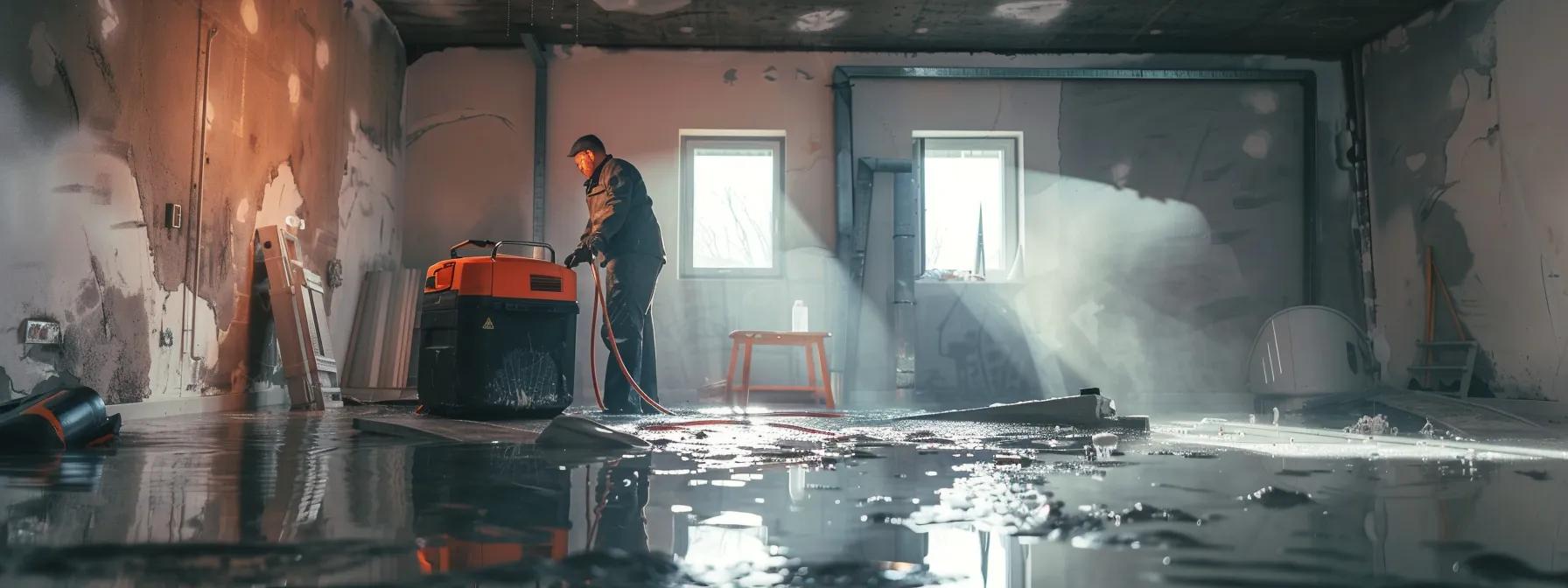
Understanding how geographical and temporal factors influence water damage statistics can provide a nuanced perspective for risk assessment and preventive maintenance. Variations in regional climate, property age, urban density, and seasonal weather patterns all contribute to distinct trends in water damage incidents. This section discusses how data patterns differ across regions, seasons, and property types, highlighting critical implications for homeowners and insurance providers alike.
Regional Breakdown of High-Incidence Water Damage Zones
Data indicates that water damage incidents are not uniformly distributed across the country. Certain regions, particularly those with older infrastructure and higher humidity levels, report a significantly higher incidence of water damage. For example, coastal areas and cities in the Northeast and Midwest, where older construction meets harsh winter weather, tend to experience more frequent plumbing failures and roof leaks. In contrast, arid regions may see less frequent water damage but are not immune to issues such as sudden flash floods or irrigation system failures.
Local government reports and insurance data confirm that homes in high-incidence zones face increased risks, necessitating targeted mitigation strategies. Homeowners in these areas are advised to invest in periodic inspections and modern water detection technologies. Regional differences also affect insurance rates, as companies adjust premiums based on historical loss data.
Seasonal Variations in Water Damage Statistical Reports
Seasonal fluctuations play a significant role in water damage occurrences. For instance, winter months often witness an increase in water damage due to frozen and burst pipes, while the rainy season in spring and summer is marked by a surge in roof leaks and flooding incidents. Data from the National Oceanic and Atmospheric Administration (NOAA) shows that water damage claims peak during these periods, correlating with the extreme weather patterns experienced each season.
This seasonal trend is important for planning preventive maintenance activities. Homeowners are encouraged to perform thorough inspections prior to the winter freeze and again before the onset of heavy rain. Understanding these seasonal shifts allows restoration professionals to plan resources more effectively, aligning repair services with periods of higher demand.
Correlation Between Property Age and Water Damage Statistics
The age of a property is a critical factor influencing water damage statistics. Older homes generally exhibit a higher incidence of water damage due to outdated construction materials and wear over time. Research indicates that homes older than 50 years are twice as likely to experience water damage compared with newer constructions. Aging infrastructure, including deteriorating roofs, worn plumbing systems, and outdated HVAC systems, contributes significantly to this increased risk.
Enhanced maintenance practices, proactive restoration, and upgrades can mitigate this risk. Homeowners of older properties are advised to undertake extensive inspections and renovations to replace outdated materials with modern, water-resistant alternatives. These measures not only reduce the probability of water damage but can also improve overall property value.
Urban Versus Rural Disparities in Water Damage Data
Urban properties often face different water damage challenges compared to rural ones. In urban settings, densely populated areas with older multi-family housing often report higher incidences of water damage due to shared plumbing systems and limited space for effective water drainage. Conversely, rural areas, while generally experiencing fewer incidents, may suffer from inadequate infrastructure maintenance and delayed emergency response times during extreme weather.
Insurance companies typically adjust their risk assessments based on these disparities, with urban properties occasionally incurring higher premiums as a result of increased risk. Homeowners and property managers in both settings must tailor their water damage prevention strategies to the specific challenges posed by their geographic conditions.
Long-Term Trends in Reported Water Damage Incidents
Over the long term, the frequency of water damage incidents has shown an upward trend. Advances in building technology and preventive systems have helped mitigate some risk; however, climate change and aging infrastructure continue to drive an overall increase. Historical data suggests that reported water damage has risen by approximately 2–3% per year over the past decade, with particularly steep increases noted in areas experiencing rapid urbanization and climatic extremes.
Such trends highlight the need for sustained investment in better building standards, improved maintenance practices, and adoption of the latest water damage detection technologies. The continuous rise in incidents calls for coordinated efforts by homeowners, contractors, insurance companies, and local governments to address and manage long-term water damage risks.
Key Takeaways: – High-incidence water damage zones are predominantly found in older urban areas and coastal regions. – Seasonal patterns show peaks in incidents during winter and rainy seasons. – Older properties are at a significantly higher risk, particularly those built over 50 years ago. – Urban areas face distinct challenges versus rural regions due to infrastructure density and shared systems. – Long-term trends indicate a steady annual increase in water damage incidents, driven by aging infrastructure and climate change.
Future Projections Based on Current Water Damage Statistics
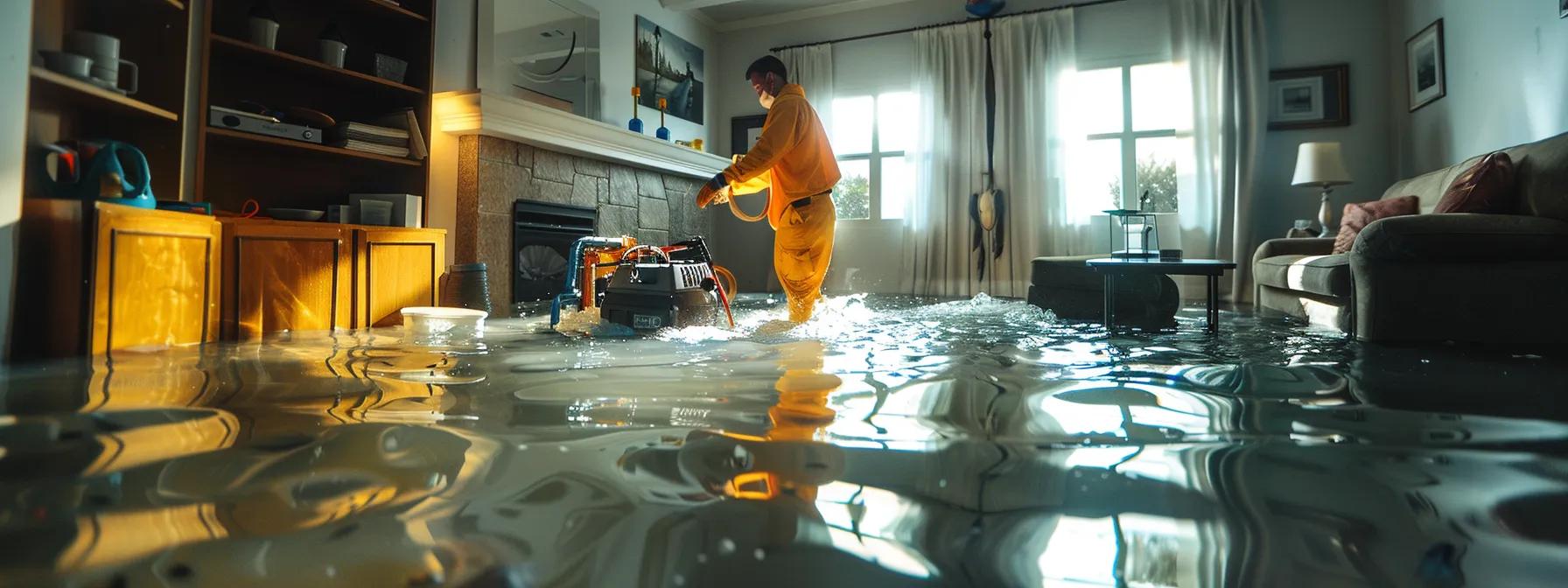
Looking ahead, water damage trends are anticipated to evolve significantly due to a combination of climatic shifts, technological advancements, and changes in building standards. Future projections based on current water damage statistics suggest an increase in frequency and severity of incidents if proactive measures are not widely adopted. This section outlines the expected changes and offers a glimpse into how emerging technologies may reshape preventive practices, insurance landscapes, and construction standards.
Anticipated Changes in Water Damage Frequency Due to Climate Factors
Climate change is predicted to further escalate water damage incidents. The increased severity and frequency of extreme weather events, such as heavy rainfall, hurricanes, and rapid snowmelt, are expected to drive a significant rise in water damage cases. Statistical models foresee an overall increase in the frequency of water damage incidents by 10–15% over the next decade, particularly in regions already prone to climatic extremes. Homeowners in these areas will face heightened risks, making climate-adaptive construction and robust prevention measures critical.
As weather patterns continue to shift, incorporating climate resilience into property design and maintenance routines will become increasingly important. Policymakers and construction standards must integrate these projections to ensure future buildings are better equipped to handle water damage risk.
Statistical Forecasts for Costs Associated With Future Water Damage
With an anticipated increase in water damage frequency, future costs associated with repairs and insurance claims are also expected to rise. Current forecasts suggest that if trends continue, homeowners could see a 20% rise in annual repair costs over the next decade. Additionally, insurance premiums are likely to increase as companies adjust their risk models based on the latest statistical trends.
Advanced data analytics and predictive modeling are being used by industry experts to estimate these costs more accurately. A study by the Insurance Information Institute predicts that without significant improvements in water damage mitigation, the national economic burden could exceed $40 billion annually within the next ten years. This projection emphasizes the economic urgency for adopting new technologies and maintenance practices.
Emerging Technologies Impact on Mitigating Water Damage Statistics
Emerging technologies are poised to play a transformative role in mitigating water damage. Innovations such as smart water sensors, artificial intelligence-driven leak detection software, and automated shut-off systems are not only improving early detection but are also reducing the overall impact of water damage incidents. Recent studies indicate that properties equipped with these technologies experience up to a 70% reduction in damage severity due to quicker response times and improved accuracy in pinpointing issues.
Furthermore, advancements in materials science have led to the development of water-resistant building materials and sealants that significantly reduce the likelihood of water damage. These technological improvements are expected to shift the trend in water damage statistics dramatically, offering hope for a future where such incidents are both less frequent and less costly.
Projected Shifts in Insurance Landscape Based on Water Damage Data
The insurance industry is already adapting to changing water damage statistics by reevaluating risk models and adjusting policy terms. Future projections indicate a shift toward more nuanced insurance products that reflect localized risks, incorporate real-time monitoring data, and reward homeowners for proactive maintenance. Insurance companies are increasingly incentivizing the adoption of smart home technologies, offering premium discounts for homes with integrated leak detection and water shut-off systems.
As these new models become mainstream, homeowners will benefit from lower deductibles and more comprehensive coverage options tailored to modern risks. This shift not only aims to reduce the economic burden but also encourages widespread adoption of improved preventive technologies across the residential sector.
Expected Evolution of Building Standards From Water Damage Statistics
Building standards are anticipated to evolve significantly as new water damage statistics and trends become available. Regulatory bodies are expected to update building codes to incorporate lessons learned from past incidents, with an emphasis on enhanced drainage, flood-resistant construction materials, and improved roofing and gutter systems. These updated standards are designed to better withstand the increasing frequency of extreme weather events and to reduce long-term water damage risks.
Innovative construction techniques, such as the integration of green roofs and permeable pavements, are already being piloted in several regions known for high water damage rates. Such advancements will likely become standard practice, creating a safer, more resilient built environment in the coming years.
Key Takeaways: – Climate change is expected to increase water damage frequency by 10–15% over the next decade. – Future repair costs and insurance premiums are projected to rise by approximately 20%. – Emerging technologies, including smart sensors and AI leak detection, can potentially reduce damage severity by up to 70%. – The insurance industry is shifting toward more customized, real-time risk assessment models. – Building standards will evolve to incorporate advanced, water-resistant construction practices and materials.
Frequently Asked Questions
Q: How often should homeowners schedule maintenance to prevent water damage? A: Homeowners are recommended to conduct biannual maintenance checks, particularly before winter and the rainy season, to inspect plumbing, roofing, and HVAC systems. Regular maintenance can detect early signs of damage, reducing overall repair costs and risks.
Q: What role do smart water sensors play in preventing water damage? A: Smart water sensors continuously monitor for leaks and unusual water flow patterns, alerting homeowners immediately if an issue is detected. This early detection allows for prompt intervention, which can significantly reduce the extent of water damage and associated repair costs.
Q: Are older homes more susceptible to water damage? A: Yes, older homes generally have outdated construction materials and systems that are more prone to leaks and failures. The risk is doubled in properties built over 50 years ago, emphasizing the need for regular renovations and inspections to reduce water damage incidents.
Q: How can extreme weather conditions impact water damage statistics? A: Extreme weather, including hurricanes, torrential rains, and rapid snowmelt, significantly increases water damage incidents. Regions prone to such events usually report higher frequency and severity of water damage, making weatherproofing and improved drainage essential preventive strategies.
Q: Will insurance premiums increase due to rising water damage claims? A: Insurance premiums are expected to rise as water damage claims increase. Insurers are adjusting their risk models based on current trends and are likely to offer incentives for homeowners who install preventive technologies, such as smart sensors and automated shut-off systems, to mitigate these risks.
Q: What are the long-term trends in water damage incidents and costs? A: Long-term trends indicate that water damage incidents are rising by 2–3% per year, with an expected increase in repair costs of around 20% over the next decade. This trend underscores the importance of proactive prevention measures, updated building codes, and adoption of advanced technologies to manage future risks.
Final Thoughts
Water damage remains a critical concern for homeowners and industry professionals alike. Detailed statistics reveal not only the prevalence and financial impact of water damage but also the various causes and sources that contribute to this growing issue. Proactive measures, including regular maintenance and the adoption of emerging technologies, can significantly reduce both the frequency and severity of water damage incidents. With future trends expected to increase risks further, an integrated approach involving updated construction standards, homeowner education, and advanced detection systems is crucial for effective prevention and long-term resilience.



